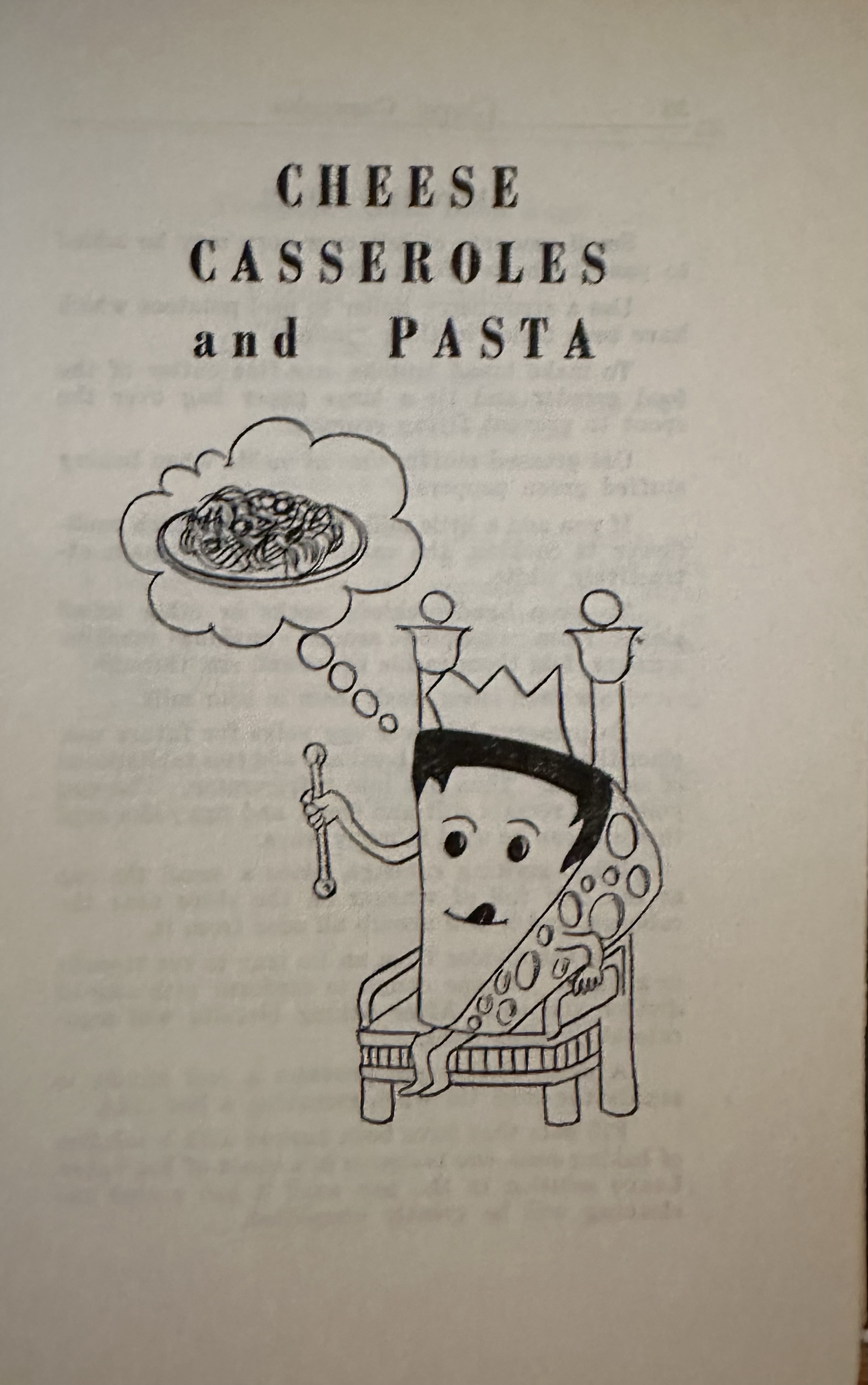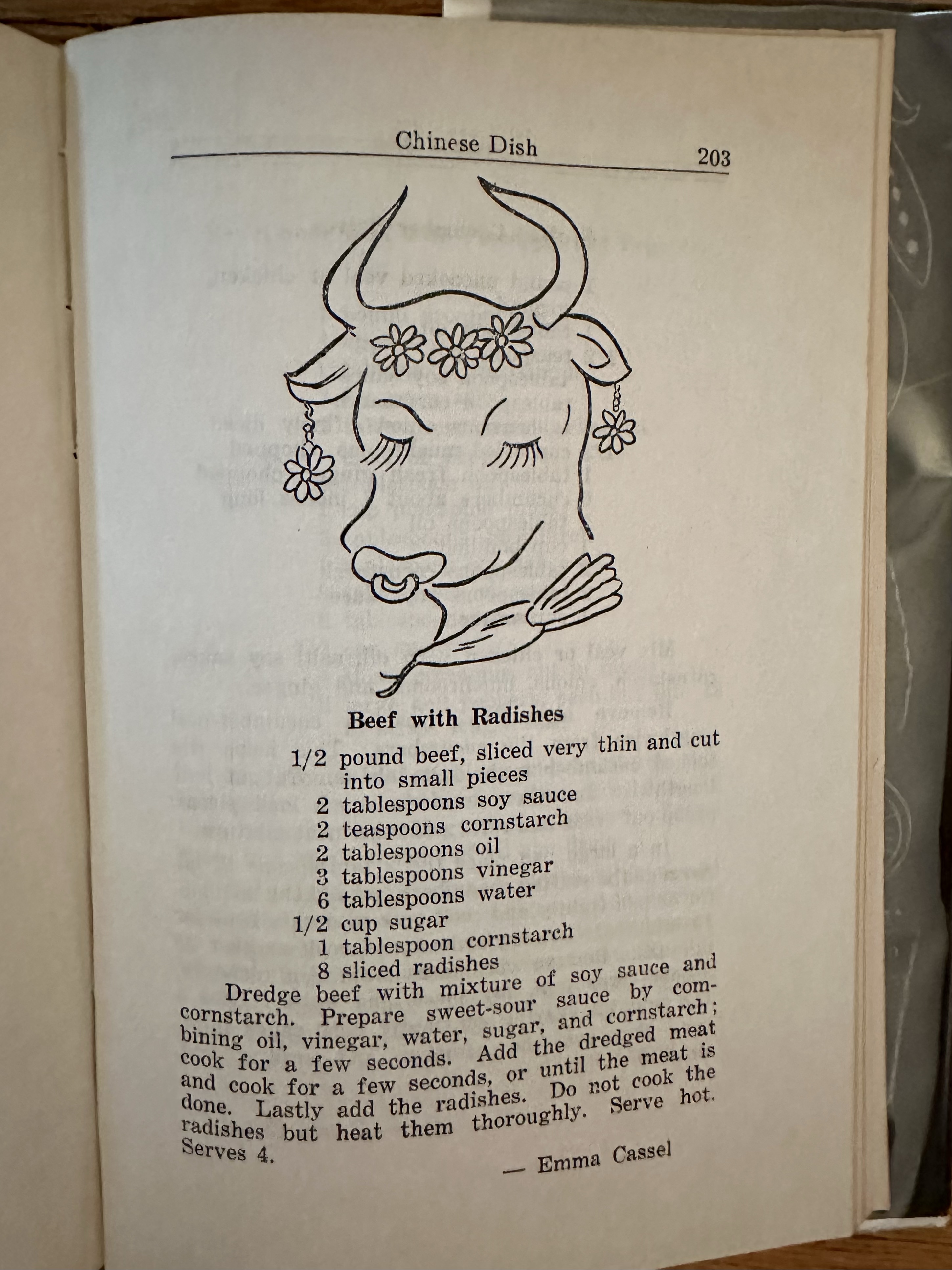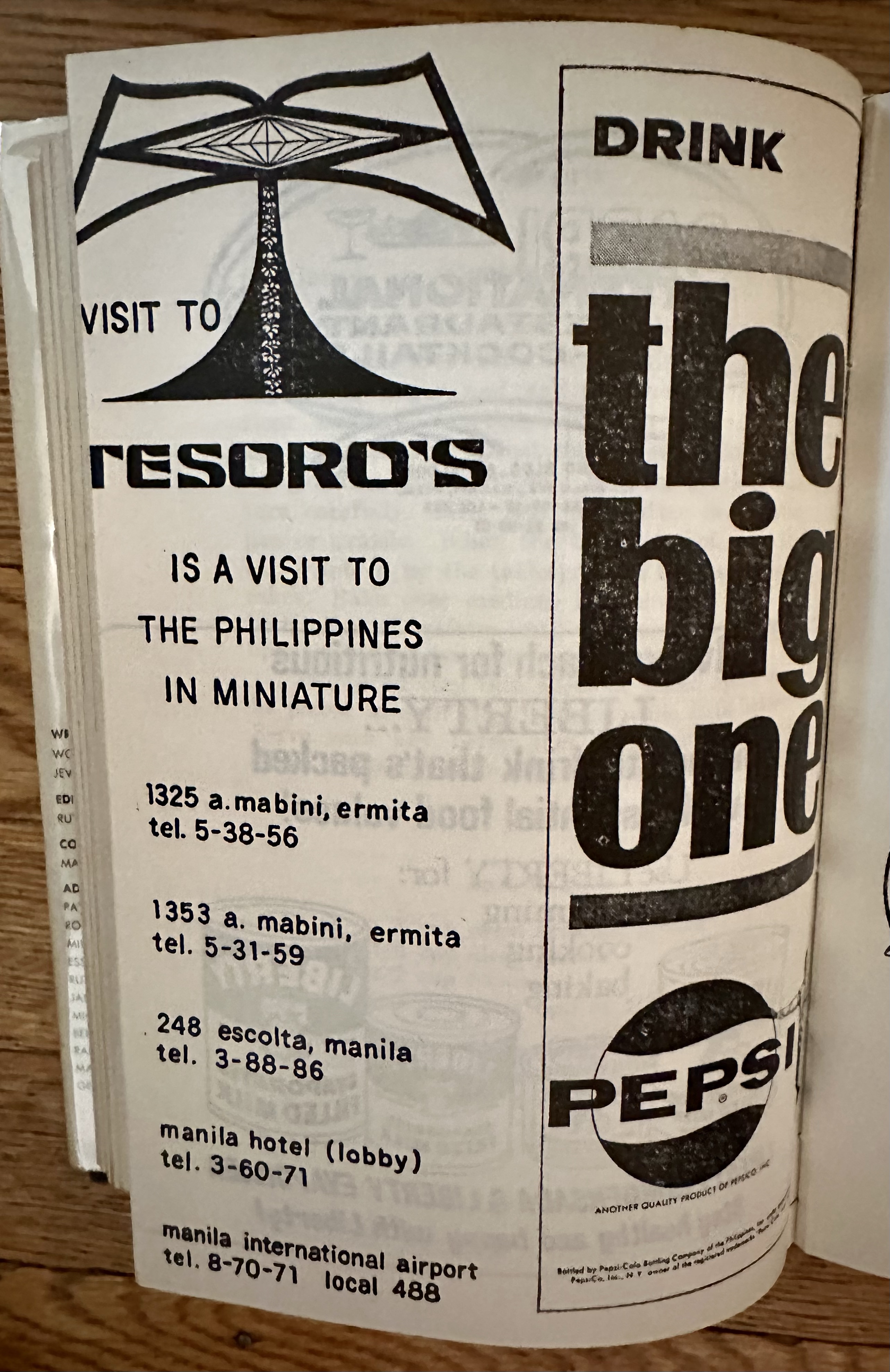“So Eat A Little” Written and Compiled by the Women’s Auxiliary of the Jewish Community of the Philippines 1966
This cookbook is a little further afield than my others but when I came across it on a list of Jewish community cookbooks at the New York Library site and then just a week later saw it for sale from an Etsy shop, I had to get it. The history of Jewish people in the Philippines is long and interesting and I really wanted to see what the cookbook would be like.
It has a really pretty cover and is not spiral-bound like many community cookbooks are. There are a lot of local and national ads scattered throughout the text. There are some cute line drawings on the section separators but no other illustrations.

In the forward, the book refers to “Jewish style cookery” which has been handed down through generations. As I discussed before here, Jewish cookbooks, especially older ones generally aren’t kosher as one might expect despite being explicitly Jewish and aimed at the Jewish community. The introduction here goes on to say that Jewish dishes are drawn from many lands bringing with them ingredients from their counties of origin from Polish pierogis to herring from Holland and that these dishes have been “reworked” to become “generically called ‘Jewish style cooking'”. They go on to say that it is interesting that this assimilation is still going on and that the variety of dishes in the book are a testimony to the “ready acceptance” of new dishes in an “ancient” tradition of cooking. I thought it was interesting that the book addressed this so directly! Very handy for people who might think of “Jewish food” more uniformly, it really does draw from all corners of the world.
I did notice that most of the recipes could be made in a kosher kitchen but a few meat dishes do call for dairy.

There is a Passover section in the book as well as a Chinese section. The rest of the sections are by recipe type such as appetizers and pickles; soup, garnishes, and sauces; fish; meat; poultry etc.

The recipes range from Rose Dayan’s North African Lemon Dressing to Mina Gaberman’s Chicken Tinola (with green papaya) to Emma Cassel’s Steamed Sole in Savory Custard in the “Chinese Dish” section. Emma Cassel provided most of the recipes in the Chinese Dish section.
A couple of recipes (like Naomi Musry’s Pumelo Peels) call for local ingredients like calamansi, bangus, and pompano or refer to lumpia “leaves” (wrappers) without explanation–in fact, it is clear they expect readers to be more familiar with lumpia wrappers than phyllo dough because they use that as a descriptor in a recipe for baklava. There are no recipes that are explicitly labeled Filipino and there is no explanation why there is a whole chapter of Chinese dishes. Of course, a lot of Filipino food is heavily influenced by Chinese cuisine but it does seem like an interesting choice. That said, some recipes have generic names like “Purim Cookies” for hamantaschen or “beef stuffing for cabbage leaves” instead of what I think must be holishkes. There could well be some Filipino dishes hidden in there! It can be hard to tell when there are so few clues and the ingredients lists are fairly streamlined.

I noticed some mistakes with ingredients—some were just missing in at least a couple recipes.